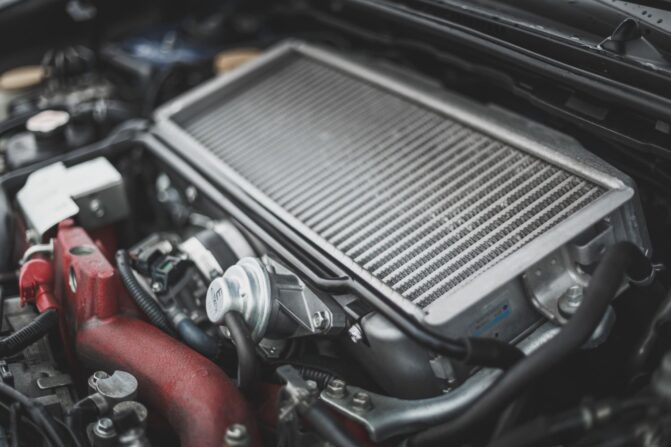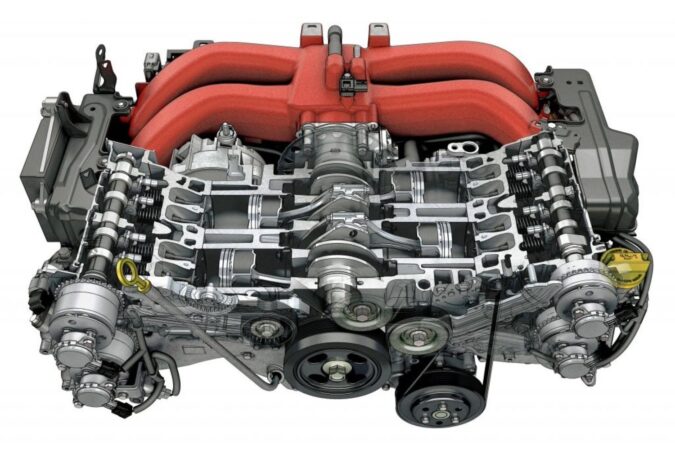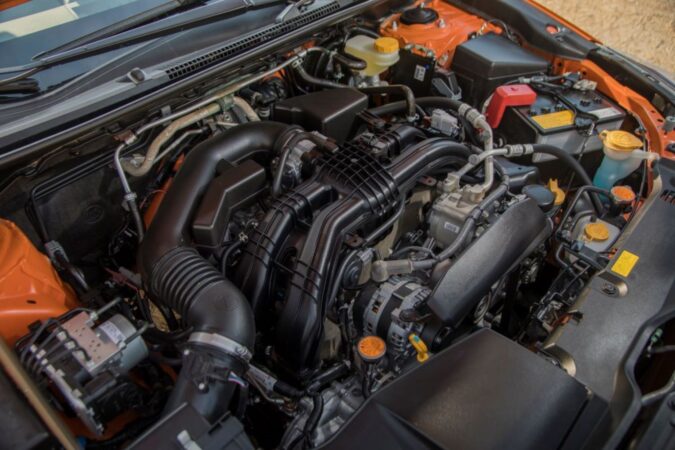Subaru’s ubiquitous 2.5-liter Boxer engines are among some of the most iconic powertrains ever made, fitted into most of its cars, such as the Outback, Legacy, Baja, Forester, and others that Subaru markets and sells here in the US. However, while these engines are pretty much everywhere, a typical Subaru 2.5 engine is not immune to problems now and then.
It’s a unique engine to diagnose, given that Subaru is among the few automakers still using Boxer-style engines. Unlike other piston designs, a Boxer engine lies flat with the pistons at a 180-degree angle. As such, while they’re wide, they also sit flat and could be mounted low inside a car. The crankshaft is placed in the middle, as the pistons are laid flat on both sides.
When they’re working, a Boxer engine’s pistons look like they’re boxing each other, similar to sparring partners. Hence, that’s where the “boxer” name came from. Alas, while it makes Subaru cars quite special, they’re not immune to systemic faults. These include head gasket failures, excessive oil consumption, and oil mixing in with the coolant, among others.
What Are The Most Common Subaru Engine Problems?
In the past, Subaru’s flat-piston Boxer engines are considered some of the best engines out there. They could easily go for 200,000 miles with minimal issues whatsoever. But, with its recent updates and changes, this has been somewhat compromised. Among the more iconic, popular, and well-known of these is the famed EJ25, which came in two variants.
There’s a naturally-aspirated version, featuring a dual-overhead-camshaft (DOHC) design, and a compression ratio of 9.5:1. Then, there’s a naturally-aspirated model that came with a single-overhead-camshaft (SOHC), but with a compression ratio of 10:1. This ratio is pretty high for a road car. Either way, both of them share a lot of similarities, like its 2.5-liter displacement.
Either way, both engines are found in pretty much all of Subaru’s more popular models over the past couple of decades. This includes the Impreza, Outback, Forester, Baja, Legacy, and more. Unfortunately, due to inherent design flaws and engineering faults, Subaru 2.5-liter engines suffer problems like oil burning, oil starvation, and head gasket issues.
With that in mind, here are some of the most common Subaru 2.5-liter engine problems (mainly focusing on the EJ25 and its variants) that you might experience:
1. Oil Mixing With The Coolant
The most common problem with Subaru’s 2.5-liter engines revolves around the head gaskets. However, this is way more common with some of the earlier models, as Subaru used low-quality gasket materials that were made out of composites. One of the side effects was repeated head gasket failures, causing issues like motor oil and coolant mixing.
Thus, creating a big, sludgy mess inside your engine. When motor oil and coolant mix, neither can function properly. As such, the motor oil is no longer effective at lubricating your engine, and the coolant is not able to effectively cool the engine. If not fixed promptly, this will cause excessive wear and tear with your engine, in addition to overheating.
Other consequences of having your motor oil mix with the coolant include wear on your piston rings. Over time, this will cause premature piston ring failure. Or, the camshaft bearings can also wear out prematurely. This is a chronic issue with many Subaru models. So, make sure you double-check the head gasket if you’re buying a used Subaru car.
2. Oil Burning Inside The Engine
This is an extension of the previous point, but when motor oil leaks through and gets into the combustion chamber, it will start to burn. This is more commonly known as “oil burning”. When you experience oil burning with your car (not just limited to Subarus), a tell-tale sign is clearly seeing thick clouds of black smoke coming out of the exhaust.
Otherwise, instead of your car’s motor oil, if it’s coolant that’s leaking into the engine’s combustion chamber and is burning, you’ll notice white plumes of smoke coming out of your exhaust. Either way, this isn’t ideal, as it causes excessive consumption of both motor oil and coolant. Remember, both fluids are vital in the smooth running of a car.
3. Coolant Leaks Or Heavy Oil Consumption
Head gasket failures with these Subaru 2.5 engines can also cause coolant leaks elsewhere. You’ll mostly notice these coolant leaks from outside the engine. This leakage will cause your car’s coolant levels to diminish. Ignore it for too long, and your car will start to overheat. And, even suffer catastrophic terminal damage, due to low coolant and poor cooling.
Additionally, besides coolant leaks, excessive oil consumption is another common fault with Subaru’s 2.5 engines. Some Subaru vehicles tend to consume motor oil at a much faster rate than a lot of other vehicles. This problem usually occurs and is exacerbated in vehicles with higher mileage. However, newer Subaru models aren’t immune to these, either.
In Subaru vehicles, this excessive oil consumption is caused by several factors. For example, worn piston rings or valve seals can cause engine oil to leak into the combustion chamber and burn off, as mentioned previously. Therefore, if you own a Subaru vehicle with an EJ25 engine, it’s wise to regularly check your motor oil levels and top it up as needed.
4. Blown Head Gaskets
While we’re on the subject of head gaskets, among the most frequently reported Subaru engine problems is blown head gaskets. You can easily spot early warning signs of this occurring. This is usually cases like engine overheating, poor performance, engine stalling, and more. You might also notice a sludgy residue when you pull out your motor oil dipstick.
This is due to, as we mentioned earlier, motor oil and coolant mixing together. If not solved promptly, this problem can eat into your bearings and your crankshaft. Ultimately, it could even cause your engine to seize up, and even scrapping the engine altogether. You should also pay close attention to the color of your exhaust smoke to pinpoint the cause.
Blue or black smoke means that your engine is burning oil, whereas white smoke means that it’s burning coolant. Unfortunately, replacing the head gasket isn’t cheap – it’ll cost anywhere from $1,000 to $1,500. While the cost of the actual head gasket material itself isn’t too expensive, your Subaru’s engine needs to be disassembled. This costs a lot in labor hours.
5. Oil Starvation Problems
Oil starvation is when parts of your engine are left without motor oil and proper lubrication. For instance, if you’re driving a car on track and pull high-G maneuvers, your motor oil will float from one side to another. In this scenario, without proper mods, there are moments when parts of your engine are deprived of oil and aren’t properly lubricated.
Without an adequate amount of oil, the metal parts of your engine will start to rub and grind against each other. This excessive friction will start eating away at components such as cylinder walls, crankshaft bearings, and more. This is worse with Subaru’s EJ25, where the crankshaft bearings are known to wear out prematurely and rapidly if there isn’t enough oil.
Boxer engines, due to their low placement, also mean the motor oil sump can’t hold enough oil. And, some Subaru cars have inadequate oil pickups, which doesn’t help with the oil starvation issues. It’s wise to not ignore these issues, as running your engine with insufficient oil can cause serious problems. This includes engine seizure and in time, outright failure.



